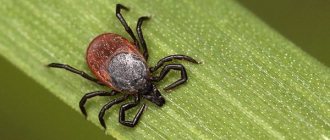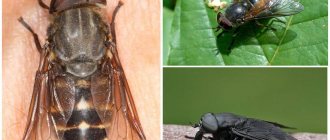Tarantula Information
Tarantulas are large representatives of the spider genus. They are poisonous and prefer to live in steppes and deserts. Rarely, the holes that tarantulas dig for themselves can be found in forest and steppe zones. These spiders spend the daytime in their earthen burrows. At night they go out hunting. Their diet consists of various small insects.
Tarantulas do not weave trapping nets, but use the web to strengthen the walls of the burrow and also to form a cocoon for eggs. To a lesser or greater extent, all types of tarantulas are poisonous. The glands that produce poison are located in the cephalothorax area of the spider. During a tarantula attack, the muscle fibers covering the gland contract and the venom is injected into the victim's body. Tarantula venom is transparent and has an oily consistency.
The danger of a tarantula bite
All tarantulas are poisonous, but the perceived danger of a bite depends on the individual characteristics of the spider. These features include the age of the arthropod, gender (females are much more aggressive, but their toxicity is lower than that of males), season and a number of other factors. For example, at the beginning of their activity, after winter, spiders are not particularly aggressive.
Note! In the last month of spring, the period of females laying eggs begins. The activity of tarantulas increases, the toxicity of their toxic substance increases by more than 2 times. In June, the mating period begins, so toxicity increases another 3 times. With the onset of autumn, before the start of winter, the toxicity of the poison is reduced.
The habitats of tarantulas in Russia are the south of Siberia, as well as the steppe area south of Saratov, Tambov, and Orel. The South Russian tarantula is also found in Belarus and Ukraine. Its bites cause unpleasant symptoms in humans, but toxic substances penetrating through damaged skin are not life-threatening. Tarantula bites are dangerous for people suffering from allergic reactions.
In appearance, a tarantula bite resembles a hornet or wasp bite. At the site of the bite, small dots are marked, located at a distance of 0.3-1.5 cm from each other. These are traces of spider chelicerae.
What do spider bites look like?
Spider bites are different and have their own specific appearance. What to do if you are bitten by a spider at home, on the street or in the forest:
- Determine the type of individual.
- Treat the bite site.
- Go to the hospital.
Each arthropod has its own characteristic bite. Let's look at what a spider bite actually looks like below.
Cross
The bite of the cross spider is almost harmless, except for the feeling of discomfort in the affected area. The poison used by the predator is low in concentration and is not capable of paralyzing or killing a person. A spider bite looks like a white spot edged with a red ring.
The first symptoms are:
- burning at the site of injury,
- aching joints,
- slight dizziness.
The human body removes toxic substances within 24-48 hours, after which the symptoms disappear, leaving a slight swelling at the site of the bite.
Tarantula
Tarantula bites are only dangerous for people with allergies. They experience:
- high fever
- local swelling,
- strong pain,
- numbness,
- rash.
Hermit
If you are bitten by a recluse spider {amp}amp;#8211, the symptoms are practically not bothersome for the first 5-6 hours, then
arise:
- severe pain at the site of the bite,
- headache,
- nausea.
Hermit venom is very dangerous because it causes tissue necrosis. The skin turns red and over time a bubble appears, which bursts and characteristic ulcers form, developing into a gangrenous scab.
House spider
A house spider bite looks like two small red spots. This type is safe and does not cause serious consequences. If you are bitten by a house spider, apply a cold compress. If swelling and redness occur, take an antihistamine (according to the instructions). In most cases, symptoms of a spider bite go away within a few hours and do not require calling a doctor or hospitalization.
Tarantula
The concentration of venom is very low, so a tarantula bite does not cause serious harm to humans. The main task of the tarantula is to paralyze the victim. The lesion appears as two small bleeding spots with some redness around it.
Karakurt
A karakurt bite looks like two inflamed small bumps against the background of a red spot with a diameter of 5-10 mm. Infection with karakurt poison, without timely treatment, causes:
- high temperature,
- convulsions,
- rash on the body,
- fear,
- psychological abnormalities (nervousness, screaming),
- hallucinations.
It is worth noting that an ant bite is similar to a spider bite both in appearance and in symptoms. Scientists single out the red fire ant because its bite is fatal in most cases, provided there is an allergy.
Symptoms of a tarantula bite
In order to quickly respond to a spider attack and take measures to eliminate the consequences, you need to know the main symptoms. It is especially important to know the signs of a spider bite for people with high allergies. With increased sensitivity, a person has 2-5 minutes before the full clinical picture appears.
A reaction to a tarantula bite for a person who does not suffer from allergies is manifested by the following symptoms:
- the appearance of symmetrically located small dots on the skin, from which a light yellow liquid flows (ichor, or lymph);
- hyperemia of the skin at the site of the bite and around it;
- an increase in local body temperature by several degrees;
- severe pain at the site of the bite;
- the appearance of edema at the site of the lesion.
At the moment of an earth spider attack, a person feels a sharp and acute pain.
After the spider injects a toxic substance, the victim may experience an attack of nausea, dry mouth and dizziness. Vomiting and abdominal pain are also noted.
For those who suffer from allergic reactions, the symptoms will be slightly different. The main features are:
- the occurrence of swelling in the lips, tongue, nose and eyes;
- the development of severe itching and burning in the affected area, which does not disappear even after a person takes antihistamines;
- severe swelling at the site of the bite;
- numbness in the affected area, be it a leg, arm, finger or other part of the body;
- eruption of gastric contents, stool upset;
- decreased blood pressure and increased heart rate;
- increased drowsiness and general malaise;
- problems in the functioning of the speech apparatus;
- difficulty breathing, inability to fully inhale and exhale;
- loss of consciousness.
When an ordinary person takes psychostimulants, hallucinogenic drugs and alcohol, the reaction to a tarantula bite will be the same as in people with allergies.
Why are spiders so dangerous?
Spiders live literally everywhere: in forests, gardens, steppes and even arid deserts. Their history goes back hundreds of millions of years: spiders caught dinosaurs and other creatures that are not now found on the planet.
There are several thousand species of arachnids in the world, only one of which feeds exclusively on plants. Other individuals do not disdain even their relatives, preferring living flesh to leaves. Their diet mainly consists of flies, mosquitoes and other insects, but sometimes larger prey is also found.
In this video you will learn about 10 deadly insects:
The danger of spiders is that they can take root in almost any habitat. At the same time, they are guided solely by instincts, and it is almost impossible to predict their behavior and defend themselves - even a house spider can bite. One thing is for sure: if in relation to other spiders and insects he behaves like a real predator, then when meeting a person he prefers to simply defend himself. Some individuals live in grass or bushes, so it can be very difficult to notice them.
The spider kills in the following way: it bites and injects a special poison, which instantly paralyzes the victim and leaves him no chance to escape from the trap. Fortunately, spider fangs are intended exclusively for killing insects, so only some large individuals, which are very rare in Russia, can bite through human skin.
Spider venom has a neuroparalytic effect on the victim.
Spider venom and its properties
The most dangerous spiders live as close as possible to the equator - they prefer a warm and humid climate. The further north you go, the smaller the arachnids living there become. Since in nature there is only one species of herbivorous spiders, the rest can one way or another be called predators. Another thing is that most of them do not pose any threat to humans. For example, from a house spider bite, a person will most likely feel only a burning sensation and a slight tingling sensation.
The main problem is that with a spider bite, a person does not feel the poison penetrating his body , but the allergic reaction that this poison can cause. In addition, dirt can get into the wound and cause an infection, which can also worsen the condition and cause complications.
Consequences of a bite
The spider's venom glands affect two vital systems: the nervous and circulatory systems. Once in the blood, the poison causes necrosis - the death of the affected tissues. Damage to the nervous system causes paralysis of the victim: acting as a neurotoxin, the poison disrupts neuromuscular mechanisms, as a result of which the victim becomes completely helpless.
Symptoms of a spider bite can be very different, it all depends on the individual and the location of the wound. A spider bite looks different from bites from insects and other creatures. The first symptoms begin to appear only after 15-20 minutes (in some cases you will have to wait a whole day), while a wasp or bee sting immediately begins to hurt and itch.
Spider venom causes tissue necrosis, it is important to consult a doctor in time
Main symptoms:
- A small white spot appears at the site of the bite. There may be slight redness around it.
- Gradually, a small blister will appear in place of the spot, the skin around it will swell and turn red. It is not recommended to tear off the film from the blister or puncture it. Depending on the type of spider, the color of the central area may vary. For example, when bitten by a recluse spider, the wound will have a bluish-blue tint.
- Since when it enters the bloodstream, the poison begins to spread throughout the body, an allergic reaction in the form of swelling can appear not only near the wound itself, but also on the face and hands.
- After some time, the bite site may become numb - the poison affects the nervous system.
The venom in the spider's glands is not enough for more than one bite in a row - The venom in the spider's glands is designed for only one bite. Therefore, if there are more wounds, most likely the bite belongs to someone else. Or there were several spiders, which in itself is difficult not to notice, since usually poisonous spiders are large in size.
- Over time, unpleasant pain may appear at the site of the bite, but not as strong as from bee or wasp venom. There may also be a burning sensation and itching at the wound site.
- As the body begins to fight the ingested toxin, allergic effects such as nausea, vomiting, upset stomach, and loose stools may gradually occur. Often there is the appearance of drowsiness, weakness throughout the body, and aching joints.
- Often there is an increase in temperature, fever, chills. The color of urine may change to pinkish or red, as well as a rapid increase in pressure (as a result of the effect of spider venom on the blood).
- With partial paralysis, convulsions in some parts of the body, muscle spasms and pain may occur.
Dizziness and fainting are often possible, so if symptoms appear, it is better to immediately consult a doctor and try to reduce physical activity and physical activity as much as possible.
First aid for a tarantula bite
A tarantula cannot kill a person. People who do not suffer from allergies do not need special treatment. Help will consist in promptly washing the wound surface. Clean running water is suitable for rinsing, which will avoid infection. You can use a soap solution.
It is advisable to treat the wound with an antiseptic - hydrogen peroxide, chlorhexidine, if such medicines are on hand.
In order to relieve swelling, you can use a cold compress of ice or other product in the freezer.
If you have a severe allergic reaction to the bites of poisonous insects and spiders, a more responsible and serious approach will be required. First of all, you need to take care of proper breathing. It is recommended to remove all clothing from the victim's upper body to eliminate additional pressure on the chest.
You need to give the person bitten plenty of water to drink. It is advisable to take antihistamines (Suprastin, Tavegil, Claritin, etc.).
After providing first aid, it is important to see a doctor as soon as possible. In an emergency, you must call an ambulance.
What is contraindicated to do if you are bitten?
It is important to know what you can do if you are bitten by a tarantula, and what actions are strictly contraindicated. Thus, it is not recommended to cauterize the bite site with alcohol or alcohol-based antiseptics. Such manipulations are not only ineffective, but can also increase pain.
Important! It is strongly recommended not to cut the lesion on your own.
This can lead to infection with pathogenic bacteria and the development of complications. In case of severe itching and burning, scratching the affected area is also contraindicated due to the risk of introducing microbes.
What to do if bitten by a spider?
A spider bite is something that can await summer residents, lovers of farming and gardening, as well as tourists and fans of outdoor recreation. Considering that the summer and tourist season is in full swing, the risk of suffering from a spider bite increases. In our area, the most likely spider bites are - cross spider and house spider. Bite of the cross spider The cross spider is a very common species of arthropod, it is found almost everywhere. The spider got its name because of the characteristic pattern on its body. The poison of the cross contains hemolysin, this substance destroys red blood cells. However, the amount of this poison in one individual is small, so the bite of the cross does not pose a serious threat to humans. However, the bite can cause great discomfort in the form of pain, burning, dizziness and aching joints. The spider's venom is completely removed from the body within a day, but the bite site itself may remain painful and swollen for several days. House spider bite House spiders are represented by several species, the black spider being the most common. This arthropod can live both indoors and in window frames, in walls, especially log walls, tree trunks, etc. House spider bites are rare, since you need to try very hard to make the spider so furious as to provoke such a reaction. . If trouble happens, then the bite site really hurts, but the pain is tolerable. Also, a slight swelling may develop in the area of microdamage; symptoms of dizziness, nausea and elevated body temperature are extremely rare. House spider bites do not cause severe intoxication; it is enough to apply ice or a cold compress to the puncture site. Usually within 1-2 days all traces disappear without special treatment. What to do if a spider bites? If a child or adult is bitten by a spider, and no one is immune from this, timely first aid can protect health. Therefore, you should know what to do in case of spider bites: - if the bite is characterized as not too dangerous, the injury site should be washed with running water, preferably with soap, to avoid possible infection of the wound; - the bitten limb should be immobilized (immobilized) to reduce the possibility of the spread of poison ;-apply a cold compress, preferably ice, to the puncture site;-drink plenty of fluids, this will speed up the elimination of toxins;-for mild symptoms such as a headache and a slight increase in temperature, you can take paracetamol;-to prevent an allergic reaction, take an antihistamine - Allergostop, Loratadine, Cetrin. If the symptoms are cause for concern, you should call an ambulance or immediately consult a doctor yourself. It is especially worthwhile to hurry in such cases: - if a spider has bitten a child (under 16 years of age). - symptoms of the bite develop rapidly, the condition worsens sharply. If you suspect a bite from a poisonous spider, you must urgently seek medical help. Before the victim is taken to the hospital, it is necessary to fix the limb using a splint made from available material. It is beneficial for the patient to drink plenty of fluids. A lotion of a strong solution of potassium permanganate should be applied to the site of the bite. If signs of an allergic reaction appear, it is necessary to take antihistamines. Prevention of spider bites. When spending the night outdoors, you should use protective canopies to enclose sleeping areas. Before going to bed, it is recommended to carefully inspect the sleeping bag and tent, room, sleeping area. Before putting on clothes or shoes during outdoor recreation, they should be carefully inspected and shaken out. You should not walk without shoes in forest clearings and in spider habitats. In most cases, spiders attack a person for the purpose of self-defense, therefore, in the first place, you should not take spiders into hands, play with cobwebs, stir up their home. If you follow these simple recommendations, your life and rest will be safe. State Institution "Lugansk Republican Health Center" LPR
How to avoid a tarantula bite?
It is important to know not only first aid measures for a tarantula bite. It is necessary to take all necessary measures to prevent an attack and subsequent bite from an arthropod.
There is an opinion that tarantulas are aggressive. In fact, spiders of this species rarely attack humans unless there are special reasons. As a rule, females attack, protecting their burrow from outside interference, especially if there are eggs or small spiders there. It is possible to prevent a tarantula attack, and to do this you need to follow a number of the following rules:
- while on vacation, avoid places where there are a large number of various cracks in the ground, dead wood and stones;
- close the tent at night;
- When at the dacha or in a tent, constantly inspect your shoes for spiders or other insects.
Children should not be allowed to take tarantulas out of their holes and walk barefoot on dry grass. These spiders are unusually agile, despite the fact that they look large and clumsy. Especially you should not tease a female with spiders on her back.
Types of predators
In order to immediately provide first aid for a spider bite, it is important to determine which individual committed the attack. To do this, it is not necessary to see the spider itself - it is enough to know some symptoms that will help distinguish one species from another and prescribe treatment in time.
Common house spider
They got their name not because they are easy to tame and make into pets. They just prefer to settle close to human settlements; they can often be found right in houses. They are quite small in size, their bodies are black or brown.
The bite of an ordinary house spider is absolutely not dangerous to humans
House spiders bite people quite rarely and only as a form of self-defense. For example, at night, when their activity increases, and a person in a dream can inadvertently touch them. They feed exclusively on insects.
A house spider bite has the following features:
- The wound may feel painful. However, they will not last long - usually a day or two.
- Minor swelling may occur around the bite site.
- An allergic reaction may cause nausea, vomiting, and dizziness.
No special treatment is required. It is enough to apply ice or a cold compress to the damaged area and hold for several minutes. After some time, the discomfort will disappear.
Cross and its poison
One of the few poisonous spiders living in Russia. A fairly common species, which can be distinguished by a characteristic cross on the upper part of the body.
Crosses can be found not only in the village, but also in a large metropolis. Fortunately, they never attack humans first and use their venom only as self-defense. They are usually born in early summer and can reach impressive sizes by fall.
The venom of the cross spider is not dangerous to human health; as a rule, it can only cause discomfort
Krestovik belongs to the group of hemolytic - the poison acts directly on the circulatory system. It is considered slightly toxic for humans, so it does not pose a great danger. Painful sensations may appear, as well as burning, unpleasant tingling, headache, aches and spasms in the joints.
Why is a tarantula bite dangerous?
Contrary to popular belief that tarantulas are one of the most terrible spiders living on Earth, apart from their frightening appearance, they do not pose a mortal danger. They have a double effect on the victim: with the help of poisonous glands, as well as small hairs on the body. With their help, the tarantula holds the victim after injecting the required amount of poison into it. In humans, they can only cause unpleasant pain and an itchy rash throughout the body.
Despite the aggressive appearance of the tarantula, its poison can only harm a person with an allergy to the poison substances
Tarantulas are found only in steppes and deserts. Their poison is designed exclusively for insects, so in humans the pain from a bite will go away after 3-4 days. However, some complications may occur, and it is still necessary to consult a doctor.
How does a tarantula bite?
One of the varieties of tarantula. It poses a mortal danger to humans only if there is a severe allergic reaction or infection at the site of the bite. It looks even more intimidating than the tarantula: it has long hairy legs and a large hairy body. It lives in deserts and lives for quite a long time: the age of females can reach 40 years.
The intensity of the tarantula's venom resembles that of a bee or wasp. Causes unpleasant tingling and itching. Despite their unattractive appearance, to this day many people keep tarantulas as pets. Scientists have proven that, getting used to their owners, spiders even bite them “dry,” that is, without injecting dangerous poison under the skin. In addition, they never attack first and, with the help of a bite, “call” to be more careful when handling them.
The poison of the tarantula spider is not dangerous to humans
Recluse spider attack
It does not look as intimidating as a tarantula or tarantula, and is also much smaller in size. But it is he who is considered one of the most dangerous spiders on the planet. Thanks to its brown color, it is difficult to notice: the hermit hides under cabinets, boxes, and blends in with the floor.
Its poison is hemolytic in nature, that is, it affects the circulatory system and destroys red blood cells - vital blood cells. The first symptoms of a bite will not appear immediately. After some time, an unpleasant burning sensation will appear in the wound area. Gradually the pain will increase and an inflated blister will appear. Some signs may resemble flu symptoms:
- aches throughout the body;
- nausea and vomiting;
- fever;
- muscle spasms;
- severe itching.
Unlike the tarantula and tarantula, an encounter with a recluse spider can end sadly
Over time, ulcers may develop at the site of the bite. Death is possible, primarily caused by failure of the kidneys or heart muscle. The bite of a recluse spider is considered difficult to bear, so if it appears, you should immediately consult a doctor.
Where does karakurt live?
Also formidable and dangerous looking. It lives in southern Russia and can be identified by white fur on its abdomen and a black mark in the center. It bites only in case of danger: for example, if it is stepped on, touched or brushed off the wall. The bite itself is not painful, the person will only feel a slight burning sensation. However, after 15-20 minutes the limb may become numb and there will be severe pain not only in the wound itself, but also in the abdomen, lower back, and chest.
One of the most dangerous. When bitten, almost all the symptoms described above appear. The poison is considered highly toxic, which can even lead to death. If unpleasant symptoms appear, you should immediately call an ambulance.











